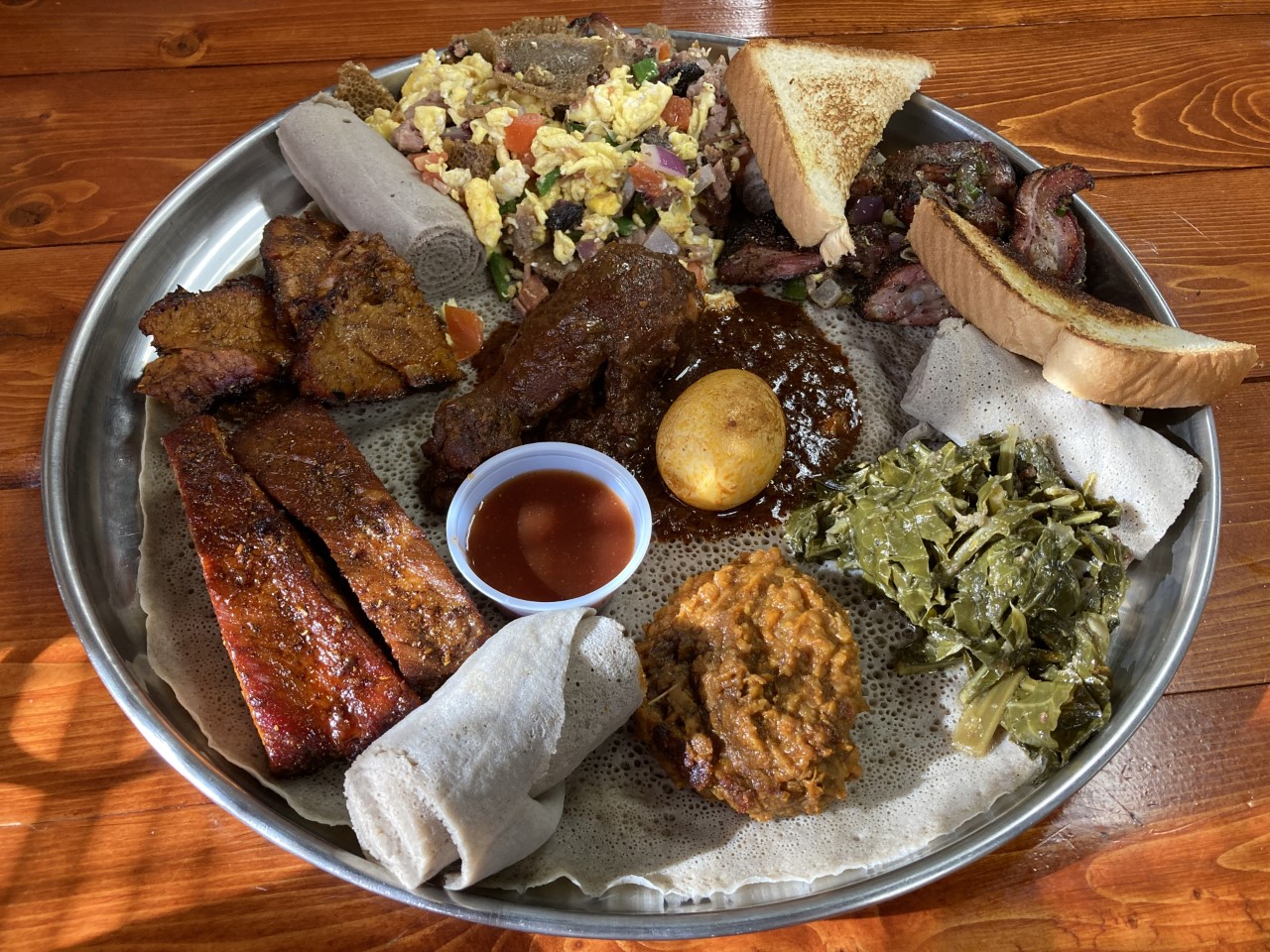Ethiopian Cuisine: A Gastronomic Adventure

Ethiopian cuisine is a vibrant tapestry of flavors, colors, and textures that reflects the country's rich cultural diversity. Central to the Ethiopian dining experience is injera, a spongy sourdough flatbread made from teff flour, which serves as both a plate and utensil for the various dishes served atop it.
One of the most famous Ethiopian dishes is Doro Wat, a spicy chicken stew often considered the national dish. It's made with berbere, a complex spice blend that gives many Ethiopian dishes their distinctive flavor. Vegetarians are well catered for with dishes like Misir Wat (spiced red lentils) and Gomen (collard greens).
Ethiopian cuisine is unique in Africa for its use of a wide variety of spices. In addition to berbere, common seasonings include mitmita (a spicier pepper blend), korerima (Ethiopian cardamom), and niter kibbeh (a spiced clarified butter).
The Ethiopian coffee ceremony is an integral part of social and cultural life. Ethiopia is the birthplace of coffee, and the ceremony is a sign of respect and friendship. The process involves roasting green coffee beans over hot coals, grinding them, and preparing the coffee in a special pot called a jebena.
Dining in Ethiopia is a communal affair, with meals often shared from a single large platter. This style of eating, known as gursha, involves using pieces of injera to scoop up the various dishes, often feeding others as a sign of love and respect.
Ethiopian cuisine also includes a variety of unique beverages. Tej, a honey wine, is a popular alcoholic drink, while non-alcoholic options include spris, a layered juice drink made from avocado, mango, and papaya.
Exploring Ethiopian cuisine is not just about tasting new flavors; it's about experiencing a rich cultural tradition that has been passed down through generations. Whether you're sampling street food in Addis Ababa or enjoying a traditional meal in a rural village, Ethiopian cuisine offers a truly unique gastronomic adventure.